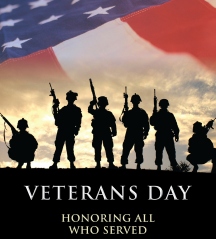 In honor of Veterans’ Day, we bring you a compelling story of China Lake, which answers the intriguing question, why would the U.S. Navy build a secret weapons base in the middle of the Mojave Desert? (Answer: It was the least likely place the enemy would look for a naval base!)
In honor of Veterans’ Day, we bring you a compelling story of China Lake, which answers the intriguing question, why would the U.S. Navy build a secret weapons base in the middle of the Mojave Desert? (Answer: It was the least likely place the enemy would look for a naval base!)
Nothing is more enjoyable than reading a well-written history book that brings to light the contributions of a highly secretive organization. Add in dozens of previously unpublished photographs and fascinating anecdotes of American technological innovation and ingenuity, and you have a real winner! Such is the case with the new fact and photo-filled publication about the Naval Air Systems Command (NAVAIR) Naval Air Warfare Center Weapons Division or NAWCWD, entitled Arming the Fleet 1943-2011: Providing Our Warfighters the Decisive Advantage. The weapons systems developed by NAWCWD in China Lake have served generations of service members since World War II, and have undoubtedly saved many of our veterans’ lives.
Government Book Talk invited Arming the Fleet author Wallace T. Martin, Deputy Director of the NAWCWD Business Development Office and expert in all things China Lake to give us the insider’s story about this book. Take it away, Wallace! – Michele Bartram, Government Book Talk Editor-in-Chief
THE NAVAL BASE IN THE DESERT
 Arming the Fleet or “ATF” tells a compelling story of the secret city of China Lake, California, a secluded Navy base that is hidden in the middle of the vast Mojave Desert that has been quietly delivering “weapons that work” since 1943. The book also provides an inside look at Point Mugu, California, a DoD (Department of Defense ) premiere electronic warfare site and home of the world’s largest instrumented over-water range where most Navy targets are tested. Combined, these two internationally recognized historic sites comprise the Naval Air Warfare Center Weapons Division (NAWCWD), known also as “the WD” or “the Division”, an organization with a strong legacy in direct Warfighter support.
Arming the Fleet or “ATF” tells a compelling story of the secret city of China Lake, California, a secluded Navy base that is hidden in the middle of the vast Mojave Desert that has been quietly delivering “weapons that work” since 1943. The book also provides an inside look at Point Mugu, California, a DoD (Department of Defense ) premiere electronic warfare site and home of the world’s largest instrumented over-water range where most Navy targets are tested. Combined, these two internationally recognized historic sites comprise the Naval Air Warfare Center Weapons Division (NAWCWD), known also as “the WD” or “the Division”, an organization with a strong legacy in direct Warfighter support.
China Lake developed 75% of the air-launched weapons used during Vietnam and jointly developed 80% of those used during Iraqi Freedom— and the Center continues to arm the fleet into the future.
WORLD FIRSTS
In the process of developing advanced weapons, the China Lake team has seen many of their technological inventions and innovations find application in the commercial world, helping to improve many fields including alternative energy, navigation, computing, medicine, automotive safety, communications, and industrial chemicals.
Along the way, the Division has been awarded over 1,600 patents, and the book documents 50+ world “firsts.” Below, are a few of these famous technological innovation firsts listed in the Arming the Fleet book:
- First to patent new biofuel (renewable plant) technologies specifically designed to convert butanol into high-performance jet fuel
- First subject search made by a digital computer – 43 years before “Google Search”
- First to manage the Navy Navigation Satellite System “Transit” — Predecessor to today’s GPS
- First body scanning technology – Predecessor to today’s MRI
- First automatic air-bag sensors for automobiles
- First stop-action video
- First chemiluminescent “light sticks”
- Non-nuclear components and testing for the first atomic bomb
- First plastic bonded explosives
- First air-to-air guided missile ever used in combat – Sidewinder
- First successful anti-radiation missile – Shrike, Predecessor to today’s HARM missile
- First sea-based ballistic missile intercept
- First U.S. aircraft rockets
- First U.S. satellite launch – NOTSNIK
- First lunar lander and Mars lander subsystems
 Image: ARMING WARHEAD TO DEPLOYING AUTOMOBILE AIR BAGS? In 1994, the Navy needed a means to accurately measure the distance traveled by the missile after launch, a computation necessary for arming the warhead firing device at a safe distance from the launch aircraft. NAWCWD China Lake engineers developed an extremely robust and precise micro-machined miniature accelerometer that was incorporated into several warhead SADs. The innovation proved so valuable, this device was later transitioned into millions of automobile crash-sensor air-bag-initiation systems by major foreign and domestic automobile manufacturers. It is also used for hundreds of other consumer and industrial applications and is marketed internationally. Photo Source: NAWCWD
Image: ARMING WARHEAD TO DEPLOYING AUTOMOBILE AIR BAGS? In 1994, the Navy needed a means to accurately measure the distance traveled by the missile after launch, a computation necessary for arming the warhead firing device at a safe distance from the launch aircraft. NAWCWD China Lake engineers developed an extremely robust and precise micro-machined miniature accelerometer that was incorporated into several warhead SADs. The innovation proved so valuable, this device was later transitioned into millions of automobile crash-sensor air-bag-initiation systems by major foreign and domestic automobile manufacturers. It is also used for hundreds of other consumer and industrial applications and is marketed internationally. Photo Source: NAWCWD
COMBAT SUPPORT AND WEAPONS DEVELOPMENT
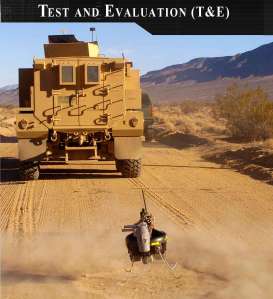 ATF describes the Weapon Division’s significant role and quick response achievements in every major U.S. crisis from WWII to Iraqi Freedom – from Iwo Jima and Midway to Fallujah and Baghdad. In addition, the book identifies WD’s influence on more than 25 major weapons systems and tells the story about how many of today’s major weapons “in the news” got their start including Trident, Tomahawk, HARM, Standard Missile, and Sidewinder. Remarkably, most of the major technologies ever developed are still in fleet use today in one version or another.
ATF describes the Weapon Division’s significant role and quick response achievements in every major U.S. crisis from WWII to Iraqi Freedom – from Iwo Jima and Midway to Fallujah and Baghdad. In addition, the book identifies WD’s influence on more than 25 major weapons systems and tells the story about how many of today’s major weapons “in the news” got their start including Trident, Tomahawk, HARM, Standard Missile, and Sidewinder. Remarkably, most of the major technologies ever developed are still in fleet use today in one version or another.
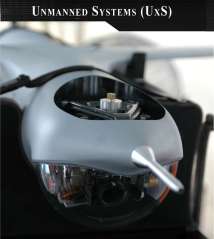 The book further documents the Division as a world leader in guided missiles, advanced weapons and systems, and complex software integration on tactical aircraft, energetic materials and subsystems. In addition, the Division is conducting RDT&E (Research Development Test & Evaluation) on over 25 varied unmanned aerial systems (UAV) which is a top-four strategic thrust area.
The book further documents the Division as a world leader in guided missiles, advanced weapons and systems, and complex software integration on tactical aircraft, energetic materials and subsystems. In addition, the Division is conducting RDT&E (Research Development Test & Evaluation) on over 25 varied unmanned aerial systems (UAV) which is a top-four strategic thrust area.
UNIQUE RANGES AND ONE-OF-A-KIND FACILITIES
High-tech work is performed at very unique ranges and facilities. Many are one-of-a kind, including:
- World’s largest x-ray and live-fire facilities for massive Trident size motors
- World’s largest weapons survivability laboratory with three high velocity airflow systems (HIVAS)
- World’s largest fuze simulation arena
- Second largest and fastest supersonic sled track in the world
- Second largest photovoltaic plant (solar energy) in the DoD
- Premiere DoD indoor Radar Reflectivity Laboratory
- Far-field measurement capability covering the widest frequency range of any test facility in the U.S.
- One of only a few DoD test centers capable of bistatic radar cross section testing
- One-of-a kind outdoor radar cross-section range
- One of only two large plasma coating systems (HiTUS) in the U.S.
- Only U.S. electronic warfare open-air range
Image:Land and Sea testing ranges for NAWCWD China Lake
Other facilities include robotic prototyping, aircraft mock-ups, and one unique geothermal plant that converts natural heat from the earth into electricity, significantly reducing the Center’s total energy costs.
The enormous test ranges at China Lake are larger than the state of Rhode Island and the Sea Range at Point Mugu is expandable to 220,000 square miles.
COST-EFFECTIVE DIRECT WARFIGHTER SUPPORT
Arming the Fleet showcases the accomplishments of a creative and technically ingenious workforce –delivering weapons that work for more than 70 years.
More importantly for this era of tight budgets, ATF also provides an insider’s view as to how your taxpayer dollars are wisely spent in defense of our country. For example, in the 2005 BRAC congressional hearings, programs and capabilities from numerous other bases were transitioned to China Lake due to its extensive expertise and infrastructure. And on June 14, during the 1995 BRAC hearings, Secretary of the Navy John Dalton stated, “China Lake and Point Mugu [rate] number 1 and 2 in military value among all Navy activities.”
This expanded third edition of Arming the Fleet is a high-quality publication of 208 pages, with a whopping 216 photos/graphics and over 1,000 indexed items, covering the Division from its founding through 2011. Anyone wanting to learn more about major milestones in U.S. Naval weaponry and technology “then and now” will find this book of great interest – not just “history.”
The legacy continues…
— Wallace T. Martin, Deputy Director, NAWCWD Business Development Office
How can you obtain Arming the Fleet: 1943-2011, Providing Our Warfighters the Decisive Advantage?
- Shop Online: Buy it online, 24/7, 365 days a year on the U.S. Government Online Bookstore website.
- Print and eBook: Buy Arming the Fleet online (all formats visible on this page)
- Order by Phone: Call our GPO Customer Contact Center Monday through Friday, 8 am to 5:30 pm Eastern (except US Federal holidays). From US and Canada, call toll-free 1.866.512.1800. DC or International customers call +1.202.512.1800.
- Visit our Retail Store: Buy it at GPO’s retail bookstore at 710 North Capitol Street NW, Washington, DC 20401, open Monday–Friday, 9 a.m. to 4 p.m., except Federal holidays, (202) 512-0132.
- Find it in a Library: Search for it in a Library.
 About the Author and Guest Blogger: Wallace T. Martin began initial research for Arming The Fleet in 2001, culminating in the first edition in 2004, followed by the second edition in 2008, and the third edition in 2011 – the only version distributed nationwide. The ongoing ATF product line includes the larger publication, a shorter Arming the Fleet Highlights, and a one-page NAWCWD Quick Facts. Since 2000, Martin serves as the Deputy Director, NAWCWD Business Development Office. In addition, since 2004, Martin has served as the lead WD technical writer and site coordinator for the 200-300 page annual Command History, as required by the Chief of Naval Operations. Martin has a passion for telling the WD story providing an insider’s view as to how taxpayers’ dollars are wisely spent in defense of our country. Martin has a B.S. degree in Business Administration – Management from California State University.
About the Author and Guest Blogger: Wallace T. Martin began initial research for Arming The Fleet in 2001, culminating in the first edition in 2004, followed by the second edition in 2008, and the third edition in 2011 – the only version distributed nationwide. The ongoing ATF product line includes the larger publication, a shorter Arming the Fleet Highlights, and a one-page NAWCWD Quick Facts. Since 2000, Martin serves as the Deputy Director, NAWCWD Business Development Office. In addition, since 2004, Martin has served as the lead WD technical writer and site coordinator for the 200-300 page annual Command History, as required by the Chief of Naval Operations. Martin has a passion for telling the WD story providing an insider’s view as to how taxpayers’ dollars are wisely spent in defense of our country. Martin has a B.S. degree in Business Administration – Management from California State University.
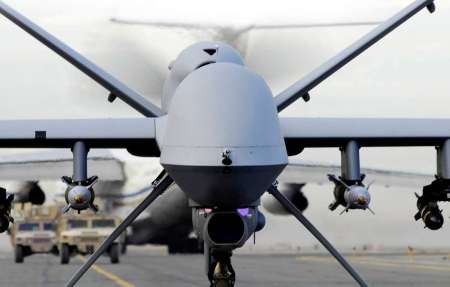

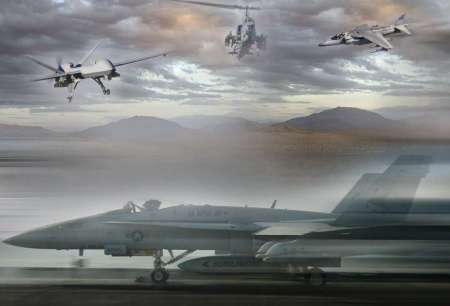

I have a stupid question. I know that my father was stationed at the Naval Base in the Mojave Desert during WWII. How can I find out what he did exactly? All I know is that he worked with radios or something like that.
LikeLike
Hello,
Thanks for visiting our website!
Although we have several WWII publications, I cannot answer your question about your father (sorry).
GPO Bookstore
LikeLike
Hi there, just wanted to tell you, I enjoyed this post.
It was helpful. Keep on posting!
LikeLike
Be careful of Chinese wide eye trade secrets spy. You guys are in their radar 24 hrs all the time. They will grab it unknowingly. Let us not be stupid
LikeLike
Secret ?? I don’t think so. As a young boy I and my 2 sisters lived on the base in one of the first family accommodations..a Quonset hut. This was about 1940 or ’41
We walked all over the base chasing wild burros and watching the water sled tests with men strapped in for observation. China Lake was then known as NOTS or knots. Many of the “secret” developments were on display every year or so for base residents to see.
My Grandmother lived in Ridgecrest just outside the main gate. It was a great place to grow up.
Stephen McKeown
LikeLike
It seems like the “secret” of this secret base was over after World War 2 when it was openly known that R&D was going on there. Sounds like a great place to visit! Thanks for the note…
LikeLike
It’s remarkable to see that most of the major technologies ever developed are still in fleet use today in one version or another and High-tech work is performed at very unique ranges and facilities. I am feeling a proud american.
LikeLike
idk about you guys, but drones really gives me the scare. i dont know if i should feel safe or something else.
P.S. IMO only
LikeLike
“…the secret city of China Lake, California, a secluded Navy base that is hidden in the middle of the vast Mojave Desert…”
Secret city? Hidden? I’m sorry, but any place on a AAA road map and amply identified by road signs is hardly secret or hidden. Access may have been limited, but untold numbers of people knew (and know) generally what China Lake was/is used for. In the late ’60s, while still in high school, my family drove over from the Central Valley for a day to see some Native American rock paintings on one of the China Lake ranges. We got on the base because my mother’s boss was a CalTech alumuni and this was a field trip.
I appreciate the information, but why all the dramatics. Just tell the story.
LikeLike
I will be @ China lake / Ridgecrest on the 16th of November to see some of our advancements in vital protection of America
LikeLike